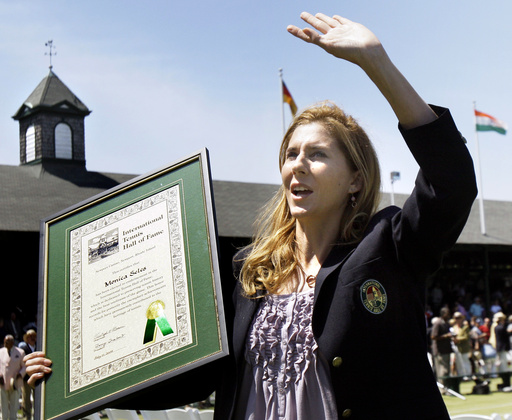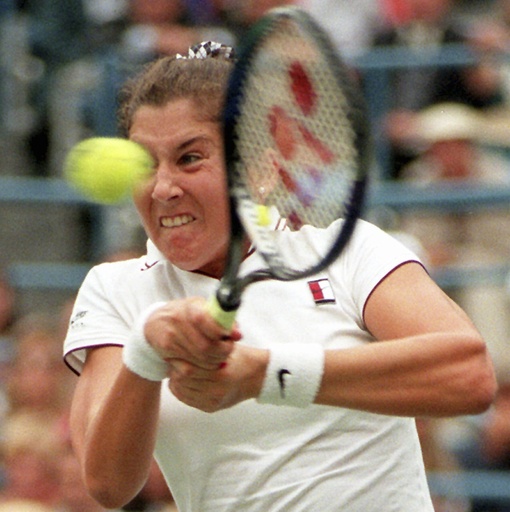



Monica Seles first noticed the symptoms of myasthenia gravis — a neuromuscular autoimmune disease she discussed during a recent interview with The Associated Press — while she was swinging a racket the way she'd done so many times during, and after, a career that included nine Grand Slam titles and a place in the International Tennis Hall of Fame.
“I would be playing with some kids or family members, and I would miss a ball. I was like, ‘Yeah, I see two balls.’ These are obviously symptoms that you can’t ignore,” Seles said. “And, for me, this is when this journey started. And it took me quite some time to really absorb it, speak openly about it, because it’s a difficult one. It affects my day-to-day life quite a lot.”
The 51-year-old Seles, who won her first major trophy at age 16 at the 1990 French Open and played her last match in 2003, said she was diagnosed with myasthenia gravis three years ago and is speaking publicly about it for the first time ahead of the U.S. Open, which starts on Aug. 24, to raise awareness about what is known as MG.
The National Institute of Neurological Disorders and Stroke calls it “a chronic neuromuscular disease that causes weakness in the voluntary muscles” and “most commonly impacts young adult women (under 40) and older men (over 60) but ... can occur at any age, including childhood.”
Seles said she'd never heard of the condition until seeing a doctor and being referred to a neurologist after noticing symptoms such as double vision and weakness in her arms — “just blowing my hair out ... became very difficult,” she said — and legs.
“When I got diagnosed, I was like, ‘What?!’” said Seles, who is partnering with argenx, an immunology company headquartered in the Netherlands, to promote their Go for Greater campaign. “So this is where — I can’t emphasize enough — I wish I had somebody like me speak up about it.”
It's been three decades since Seles returned to competition at the 1995 U.S. Open, making it to the final, more than two years after she was attacked by a man with a knife at a tournament in Hamburg, Germany.
“The way they welcomed me ... after my stabbing, I will never forget,” Seles said about the fans in New York. “Those are the moments that stay with you.”
She talks about learning to live a “new normal” nowadays and characterized her health as another in a series of life steps that required adapting.
“I had to, in tennis terms, I guess, reset — hard reset — a few times. I call my first hard reset when I came to the U.S. as a young 13-year-old (from Yugoslavia). Didn’t speak the language; left my family. It’s a very tough time. Then, obviously, becoming a great player, it’s a reset, too, because the fame, money, the attention, changes (everything), and it’s hard as a 16-year-old to deal with all that. Then obviously my stabbing — I had to do a huge reset," Seles said.
“And then, really, being diagnosed with myasthenia gravis: another reset. But one thing, as I tell kids that I mentor: ‘You’ve got to always adjust. That ball is bouncing, and you’ve just got to adjust,’” she added. "And that’s what I’m doing now.”
___
Howard Fendrich has been the AP’s tennis writer since 2002. Find his stories here: https://apnews.com/author/howard-fendrich. More AP tennis: https://apnews.com/hub/tennis

 Associated Press Top News
Associated Press Top News
 America News
America News KNAU
KNAU AlterNet
AlterNet Medscape
Medscape WISC-TV Channel 3000
WISC-TV Channel 3000 Esquire
Esquire St. Louis Public Radio
St. Louis Public Radio WBAL-TV 11 Baltimore Covid-19
WBAL-TV 11 Baltimore Covid-19 Press of Alantic City Business
Press of Alantic City Business